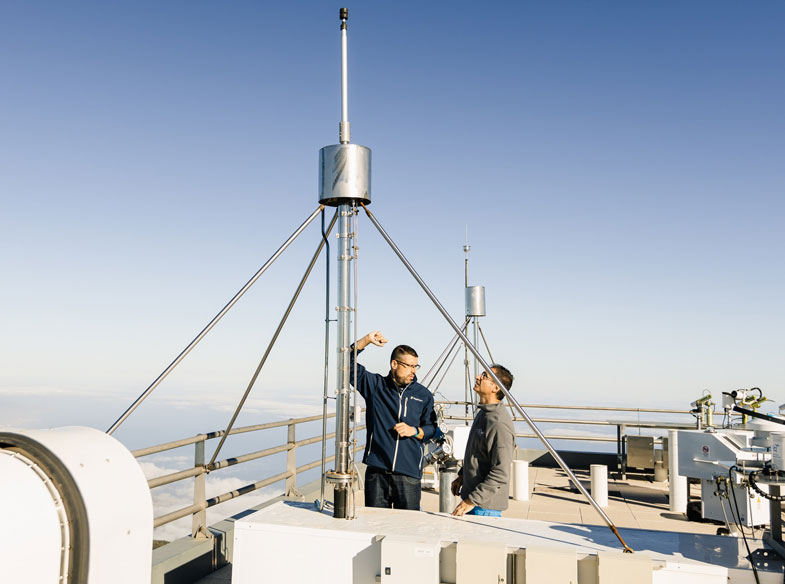
On 24 May 2023, the World Meteorological Congress formally approved the Global Greenhouse Gas Watch. This resolution is essential for enabling more efficient climate science aimed at actionable societal impacts.
Acknowledging the demand for a new value chain in climate observations, the resolution taken by the World Meteorological Congress integrates the emerging need for a better scientific understanding of the Earth's greenhouse gas fluxes and the request from policymakers to rely on high-resolution data to take and assess science-based mitigation actions matching the goals of the 2015 Paris Agreement. With its experience with the World Weather Watch and the Global Atmosphere Watch, the WMO has long established its capacity to coordinate national and regional initiatives to produce a harmonised, coherent, global output. The Global Greenhouse Gas Watch would bring climate predictions to the same level as weather predictions, featuring a unified global coverage with increased reliability and high spatiotemporal resolution.
Relying on existing research infrastructures such as ICOS for increased capabilities
Rather than building a global network from scratch, the future Global Greenhouse Gas Watch will coordinate outputs from existing land-based and space-based observation communities as well as modelling initiatives worldwide to create gridded products. This collaborative approach ensures an efficient integrated global observation system is built based on the accumulated experience and knowledge developed by research infrastructures over the years. The process also allows for integrating long-term observation series crucial for data-dependent models. "This WMO initiative will hopefully fill important gaps in the global observation system in undersampled regions like the tropics and subtropics," says Alex Vermeulen, Director of the ICOS Carbon Portal and one of the driving forces behind the initiative. "The Global Greenhouse Gas Watch initiative provides a sustainable governance model to support science, policymakers and the general public. It also gives insights into where countries are at reducing our greenhouse gas emissions and how ongoing climate change impacts the emissions connected to land use and nature." The upcoming Global Greenhouse Gas Watch is a step towards unifying climate science communities and boosting their capabilities. Through FAIR and TRUST principles, the initiative will integrate the data produced by existing land and space-based observation infrastructures into a unified workflow with the modelling community. This global integration will produce gridded fluxes of CO2, CH4 and N2O hourly, with an outstanding 100x100 km spatial resolution.
During its 26th session taking place in Geneva from 27 February to 3 March 2023, the World Meteorological Organization Executive Council framed the future Global Greenhouse Gas Watch around four main components:
1/ a comprehensive, sustained, global set of surface-based and satellite-based observations with an associated data management system of the three main greenhouse gases (CO2, CH4, N2O) in various measurement configurations (total column amounts, partial column amounts, vertical profiles, and fluxes) taking in account meteorological, oceanic, and terrestrial variables. The resolution states that "these observations should be internationally exchanged as rapidly as possible", mimicking the processes in place for global weather data.
2/ Prior estimates of the greenhouse gas emissions based on activity data and process-based models
3/ A set of global high-resolution Earth System models representing greenhouse gas cycles
4/ Associated with the models, data assimilation systems that optimally combine the observations with model calculations to generate products of higher accuracy.
A major societal impact
At a societal level, the Global Greenhouse Gas Watch initiative bears a massive impact globally. In an unprecedented feat, the high-resolution gridded products delivered by the upcoming infrastructure will provide policymakers worldwide with accessible, actionable, operational data for every point on Earth. This data would be the basis for local, national, and regional authorities to take well-informed, science-based mitigation decisions, track their actions, and assess their progress in real-time. Most importantly, because the datasets will be publicly available, all civil society actors, from NGOs to citizens, can access them, ensuring transparency and increased participation in climate change mitigation actions.